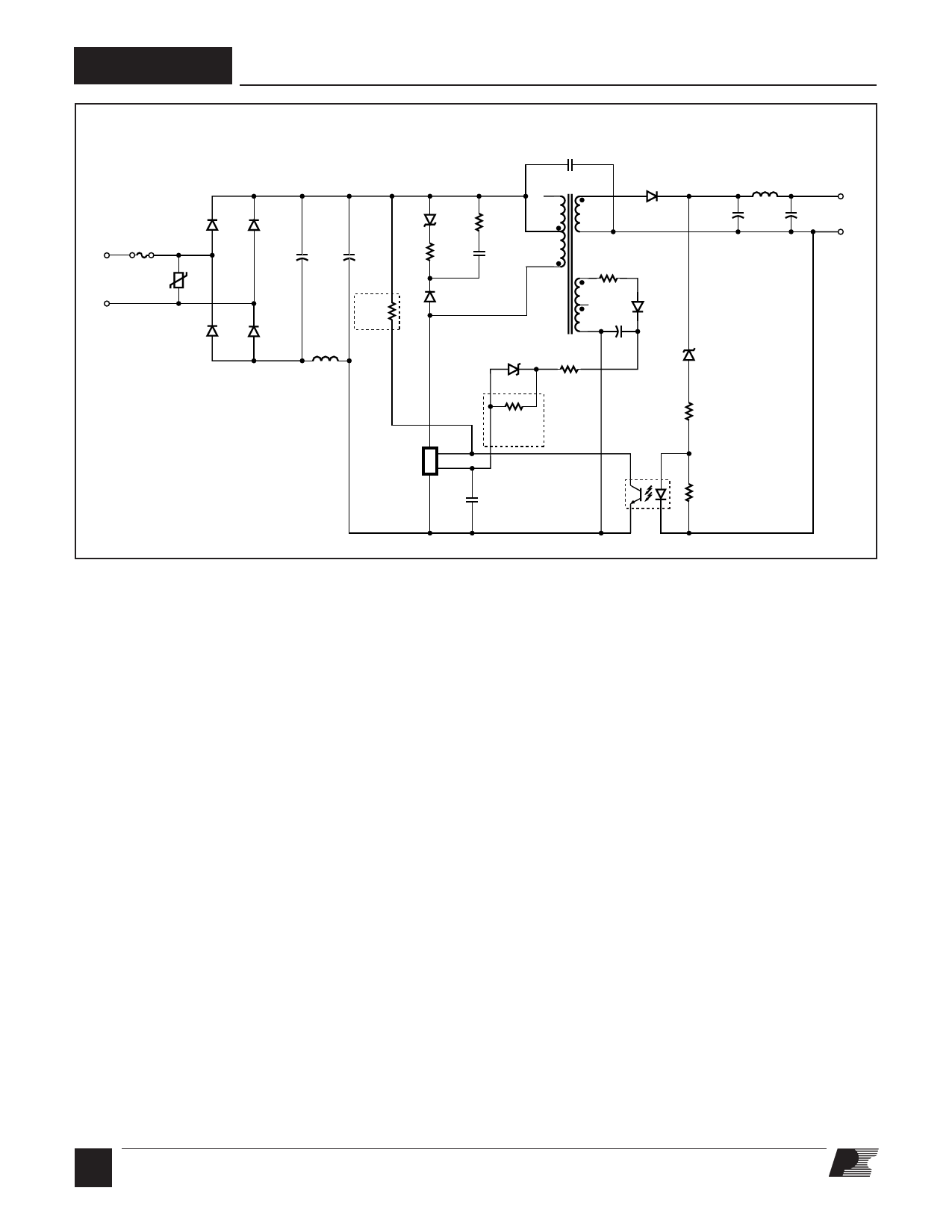TNY274PG データシートの表示(PDF) - Power Integrations, Inc
部品番号
コンポーネント説明
メーカー
TNY274PG Datasheet PDF : 24 Pages
| |||

TNY274-280
D1
1N4007
F1
J1 3.15 A
85-265 RV1
VAC 275 VAC
J2
D3
1N4007
D2
1N4007
C1
6.8 µF
400 V
D4
1N4007
L1
1 mH
*R5 and R8 are optional
components
†C7 is configurable to adjust
U1 current limit, see circuit
description
VR1
P6KE150A
C2
22 µF
400 V
R1
1 kΩ
R2
100 Ω
C4
10 nF
1 kV
C5
2.2 nF
250 VAC
NC T1 8
D7
BYV28-200
1
6
3
R7
4 20 Ω
L2
Ferrite Bead
3.5 × 7.6 mm
+12 V, 1 A
C10
1000 µF
25 V
C11 J3
100 µF
25 V J4
RTN
R5*
3.6 MΩ
D5
1N4007GP
VR2
1N5255B
28 V
D
EN/UV
S BP/M
S
TinySwitch-III
C7 †
U1
100 nF
TNY278P
50 V
R8*
21 kΩ
1%
2
5
R3
47 Ω
1/8 W
D6
UF4003
C6
1 µF
60 V
VR3
BZX79-C11
11 V
U2
PC817A
R6
390 Ω
1/8 W
R4
2 kΩ
1/8 W
PI-4244-021406
Figure 14. TNY278P, 12 V, 1 A Universal Input Power Supply.
Applications Example
The circuit shown in Figure 14 is a low cost, high efficiency,
flyback power supply designed for 12 V, 1 A output from
universal input using the TNY278.
The supply features under-voltage lockout, primary sensed
output overvoltage latching shutdown protection, high
efficiency (>80%), and very low no-load consumption
(<50 mW at 265 VAC). Output regulation is accomplished using
a simple zener reference and optocoupler feedback.
The rectified and filtered input voltage is applied to the primary
winding of T1. The other side of the transformer primary is
driven by the integrated MOSFET in U1. Diode D5, C2, R1,
R2, and VR1 comprise the clamp circuit, limiting the leakage
inductance turn-off voltage spike on the DRAIN pin to a safe
value. The use of a combination a Zener clamp and parallel
RC optimizes both EMI and energy efficiency. Resistor R2
allows the use of a slow recovery, low cost, rectifier diode by
limiting the reverse current through D5. The selection of a
slow diode also improves efficiency and conducted EMI but
should be a glass passivated type, with a specified recovery
time of ≤2 µs.
The output voltage is regulated by the Zener diode VR3. When
the output voltage exceeds the sum of the Zener and optocoupler
8
E
2/06
LED forward drop, current will flow in the optocoupler LED.
This will cause the transistor of the optocoupler to sink current.
When this current exceeds the ENABLE pin threshold current
the next switching cycle is inhibited. When the output voltage
falls below the feedback threshold, a conduction cycle is allowed
to occur and, by adjusting the number of enabled cycles, output
regulation is maintained. As the load reduces, the number of
enabled cycles decreases, lowering the effective switching
frequency and scaling switching losses with load. This provides
almost constant efficiency down to very light loads, ideal for
meeting energy efficiency requirements.
As the TinySwitch-III devices are completely self-powered,
there is no requirement for an auxiliary or bias winding on the
transformer. However by adding a bias winding, the output
overvoltage protection feature can be configured, protecting
the load against open feedback loop faults.
When an overvoltage condition occurs, such that bias voltage
exceeds the sum of VR2 and the BYPASS/MULTIFUNCTION
(BP/M) pin voltage (28 V+5.85 V), current begins to flow into the
BP/M pin. When this current exceeds 5 mA the internal latching
shutdown circuit in TinySwitch-III is activated. This condition
is reset when the BP/M pin voltage drops below 2.6 V after
removal of the AC input. In the example shown, on opening
the loop, the OVP trips at an output of 17 V.